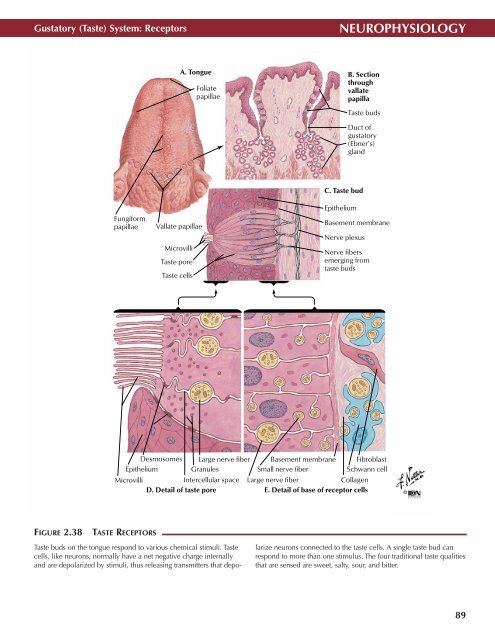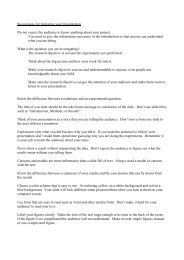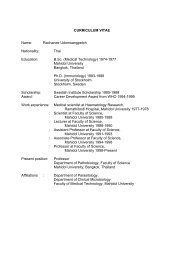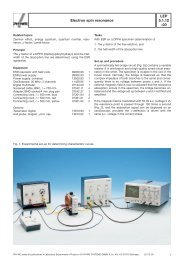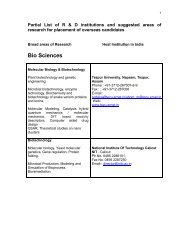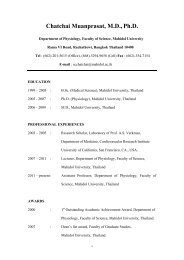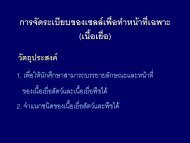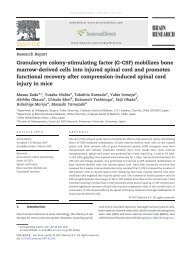Create successful ePaper yourself
Turn your PDF publications into a flip-book with our unique Google optimized e-Paper software.
Gustatory (Taste) System: Receptors<br />
NEUROPHYSIOLOGY<br />
A. Tongue<br />
Foliate<br />
papillae<br />
B. Section<br />
through<br />
vallate<br />
papilla<br />
Taste buds<br />
Duct of<br />
gustatory<br />
(Ebner’s)<br />
gland<br />
Fungiform<br />
papillae<br />
Vallate papillae<br />
Microvilli<br />
Taste pore<br />
Taste cells<br />
C. Taste bud<br />
Epithelium<br />
Basement membrane<br />
Nerve plexus<br />
Nerve fibers<br />
emerging from<br />
taste buds<br />
Desmosomes<br />
Epithelium<br />
Large nerve fiber<br />
Granules<br />
Basement membrane<br />
Small nerve fiber<br />
Fibroblast<br />
Schwann cell<br />
Microvilli<br />
Intercellular space Large nerve fiber<br />
Collagen<br />
D. Detail of taste pore E. Detail of base of receptor cells<br />
©<br />
FIGURE 2.38<br />
TASTE RECEPTORS •<br />
Taste buds on the tongue respond to various chemical stimuli. Taste<br />
cells, like neurons, normally have a net negative charge internally<br />
and are depolarized by stimuli, thus releasing transmitters that depolarize<br />
neurons connected to the taste cells. A single taste bud can<br />
respond to more than one stimulus. The four traditional taste qualities<br />
that are sensed are sweet, salty, sour, and bitter.<br />
89


